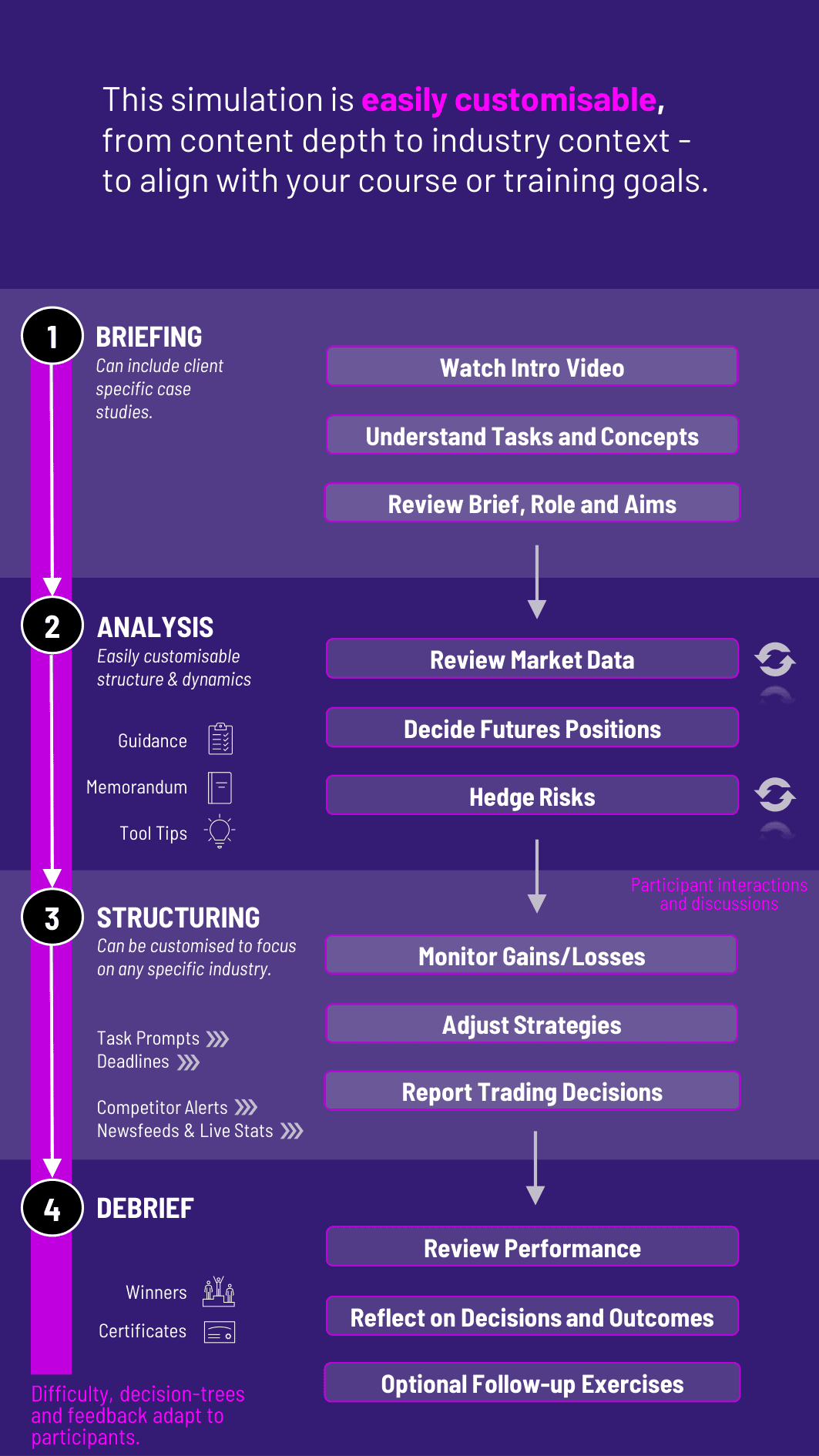
Participants step into the role of financial traders and risk managers, using futures and forwards to hedge, speculate, and manage exposures in real time with our Futures and Forwards Course.
Futures vs Forwards: Understanding contract structure, standardization, and counterparty risk
Hedging Strategies: Using contracts to offset risk in commodities, interest rates, or FX
Speculative Strategies: Taking directional views to profit from market movement
Basis Risk and Convergence: Managing the difference between spot and futures prices
Margining and Mark-to-Market: Tracking daily settlements and capital requirements
Settlement and Delivery Mechanisms
Risk-Reward Trade-offs: Balancing potential gain with exposure and leverage


Interpret market data and forecasts across asset classes
Decide when to enter or exit futures and forward positions
Use contracts to hedge price risk or take speculative positions
Monitor gains, losses, and margin calls throughout the course
Adjust strategies based on simulated news events or market shocks
Report on the effectiveness of their hedging or trading decisions
This course helps participants move from theory to practice in derivative markets. Participants learn to:
Differentiate between forwards and futures and apply them appropriately
Build effective hedging strategies for common business exposures
Execute trades with discipline under time pressure
Understand the mechanics of margining, settlement, and risk
Evaluate the performance and unintended consequences of their strategies
Communicate derivatives decisions clearly to internal stakeholders
Do participants need prior experience with derivatives? No prior trading experience is needed, but familiarity with basic financial instruments and market concepts is helpful.
Can the course cover both commodity and financial derivatives? Yes. The course includes multiple asset types such as commodities, interest rates, and foreign exchange.
How long does it take? It can be delivered in a 3 - 4 hour session or extended over several rounds for deeper trading and performance reviews.
Is it suitable for MBAs or undergraduates? Both. The course can be adjusted for depth, with more technical content for advanced participants and simplified versions for introductory classes.
How is performance assessed? Participants are evaluated on profitability, effective risk management, responsiveness to news events, and clarity in decision-making reports.
Join this 20-minute webinar, followed by a Q&A session, to immerse yourself in the course.
or
Book a 15-minute Zoom demo with one of our experts to explore how the course can benefit you.